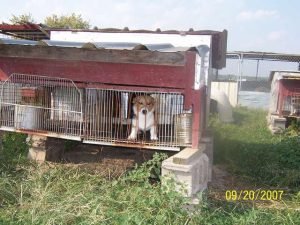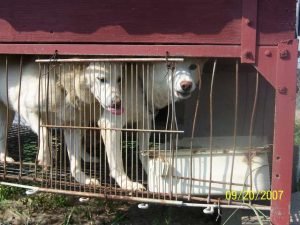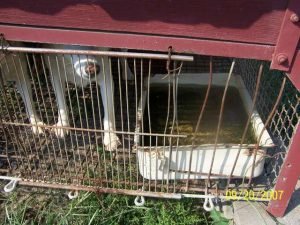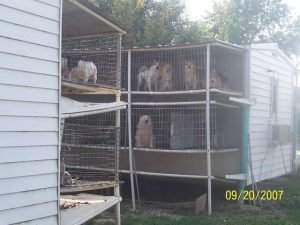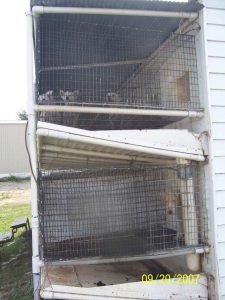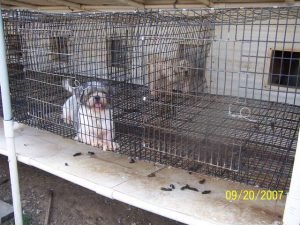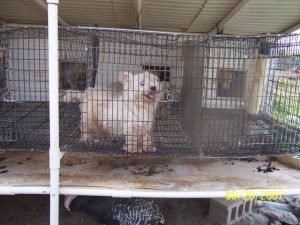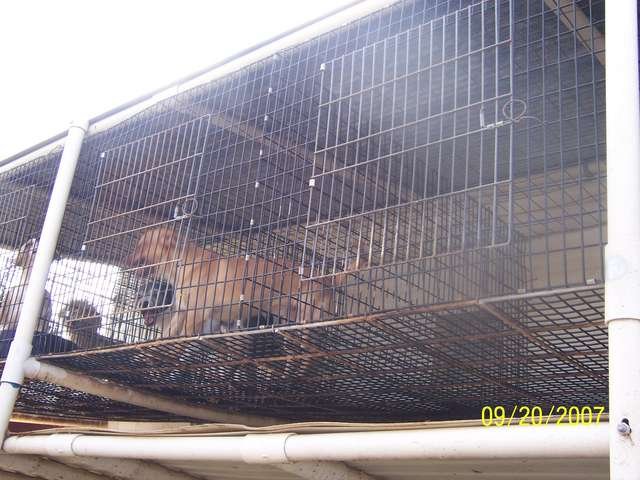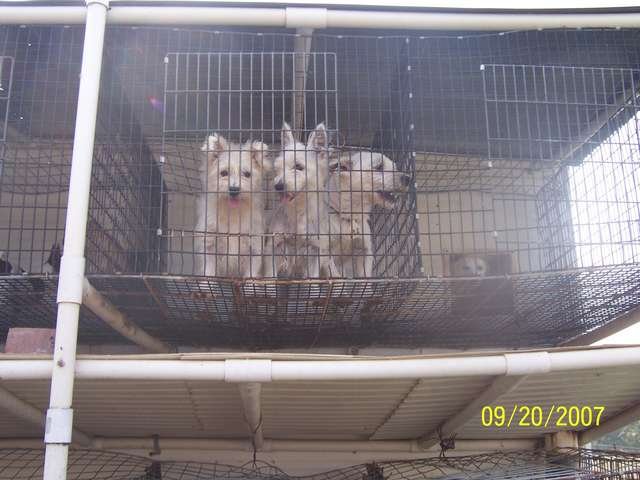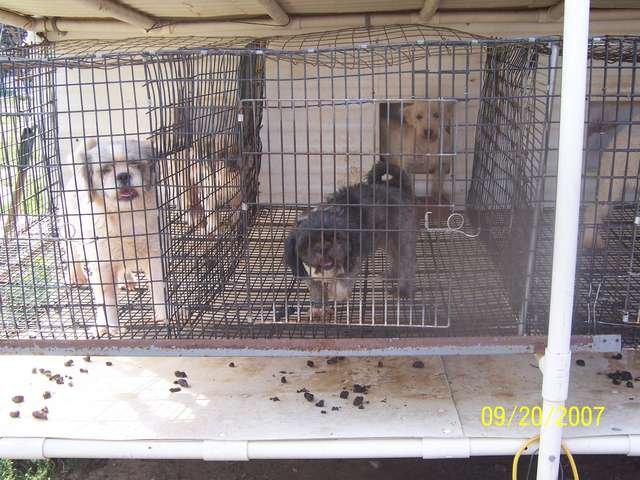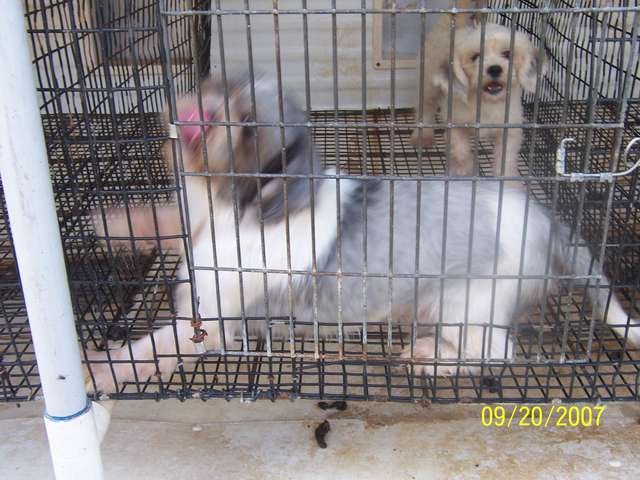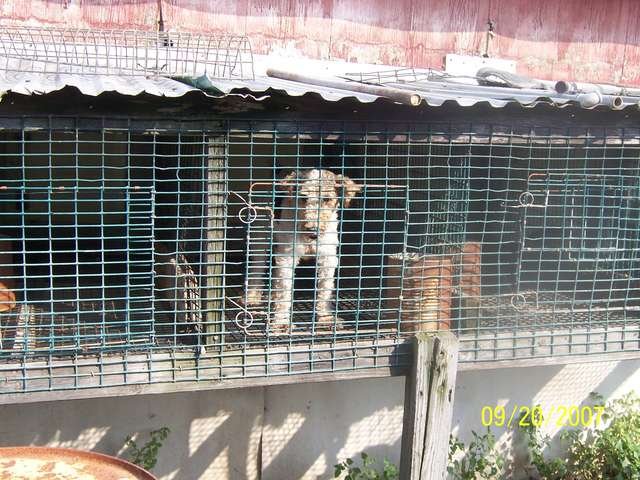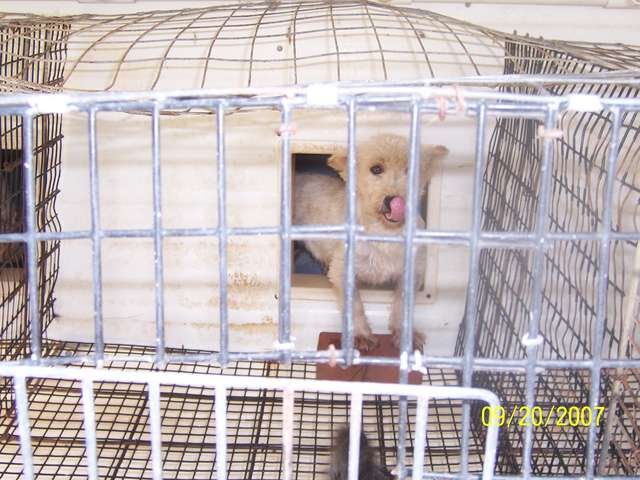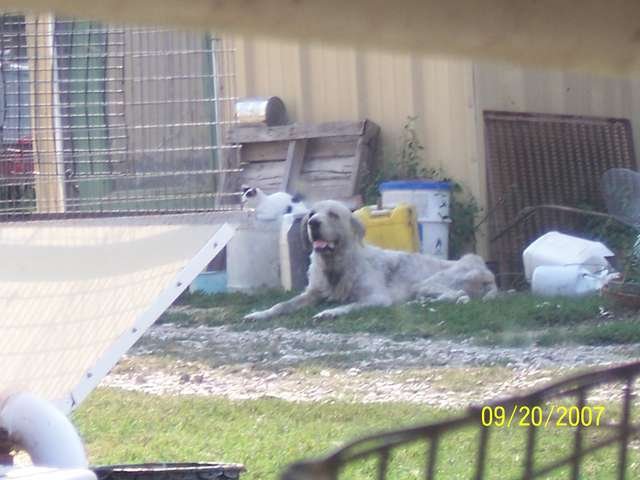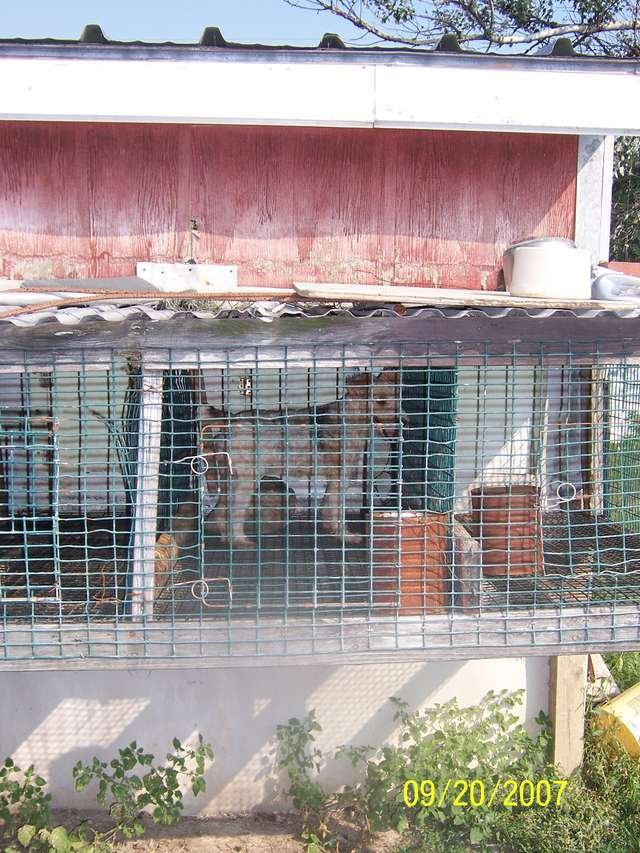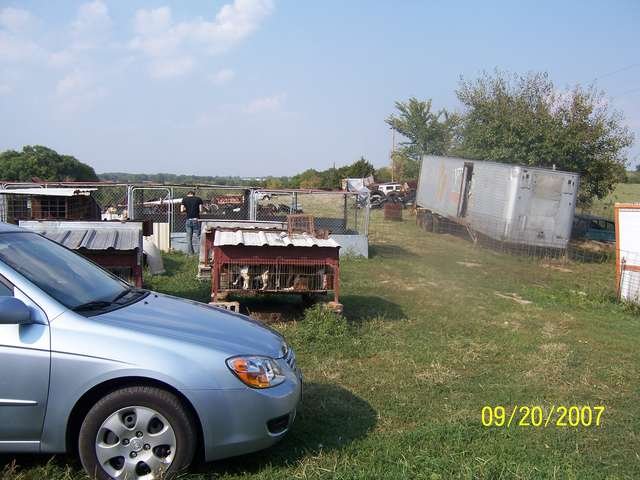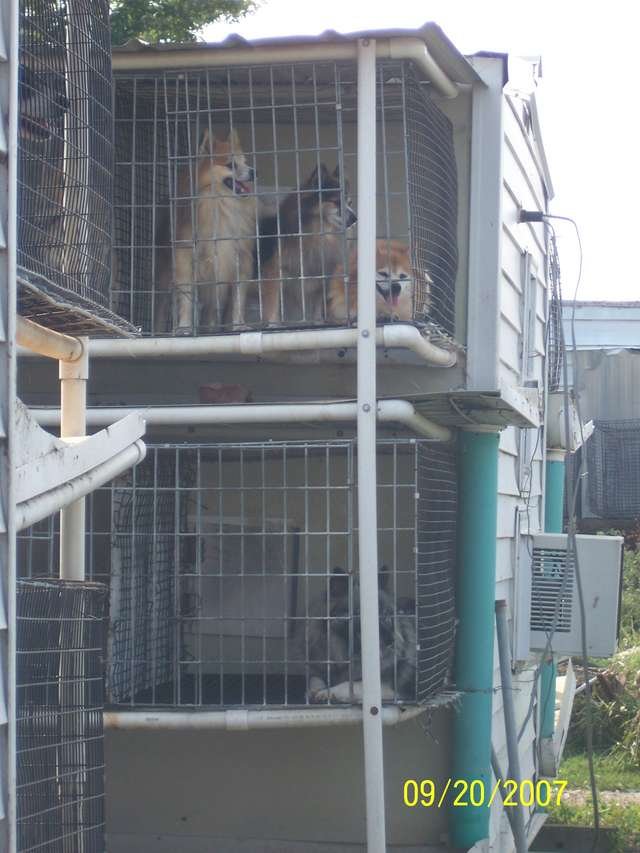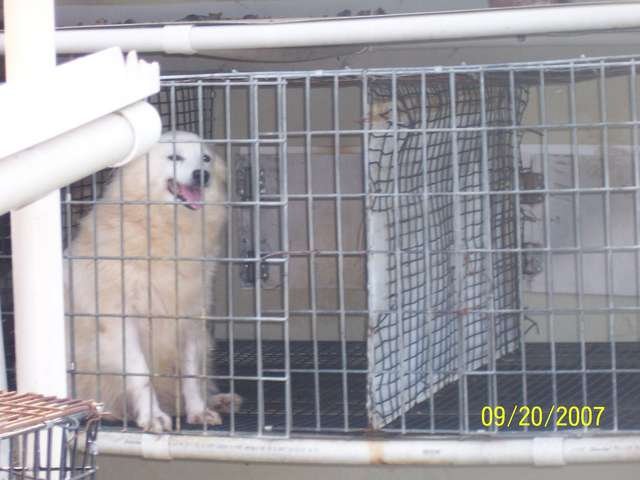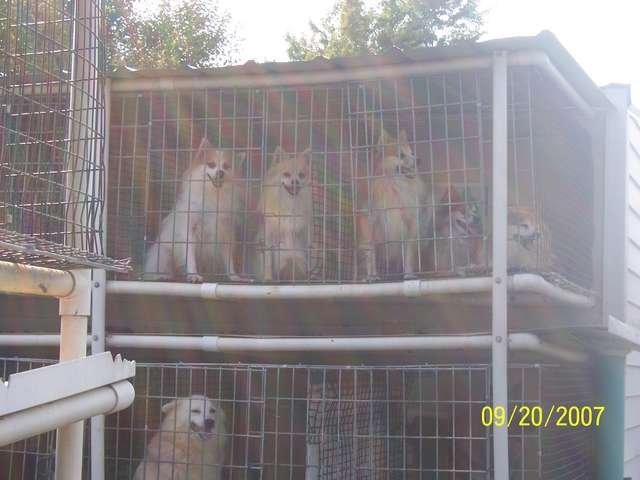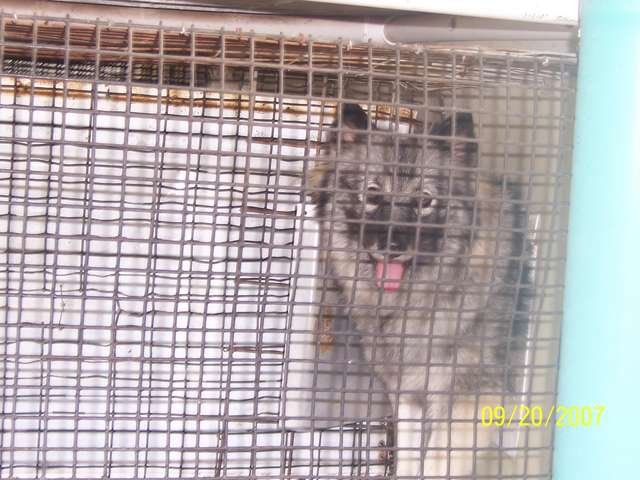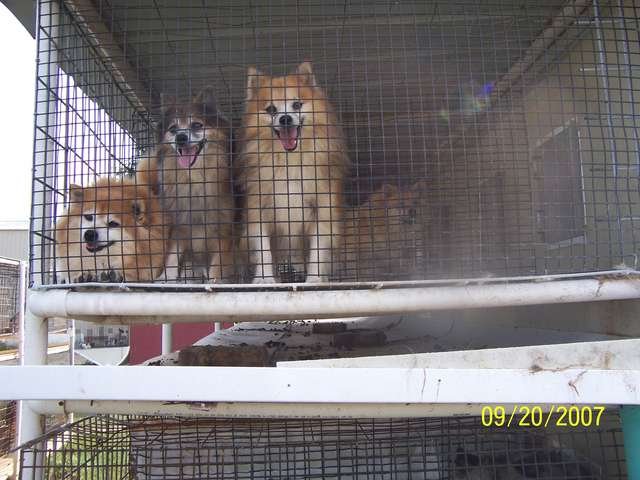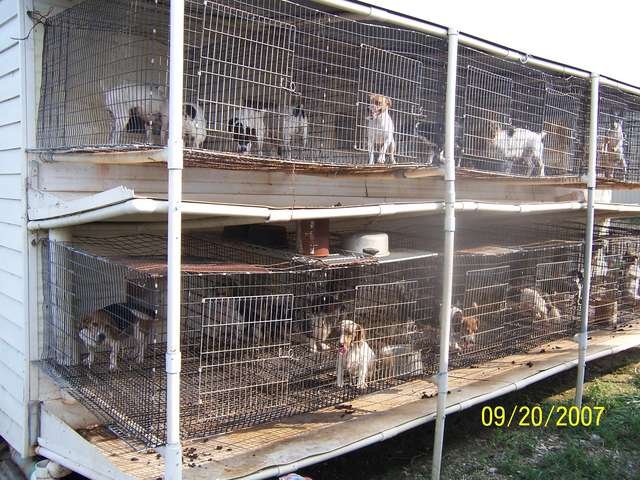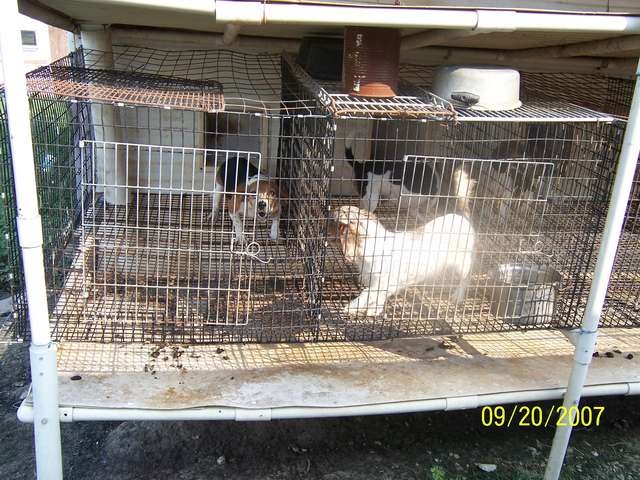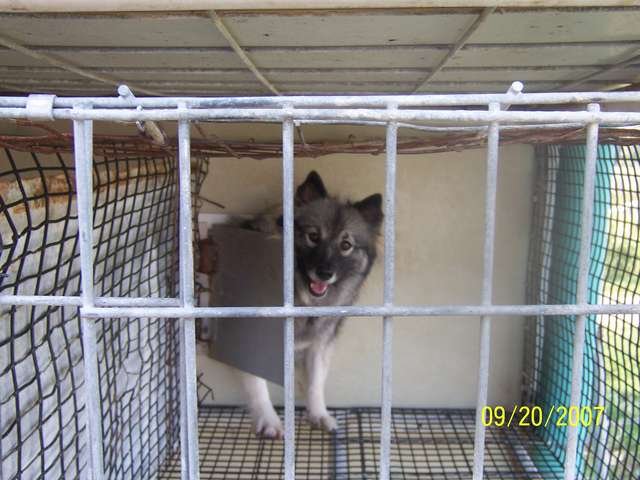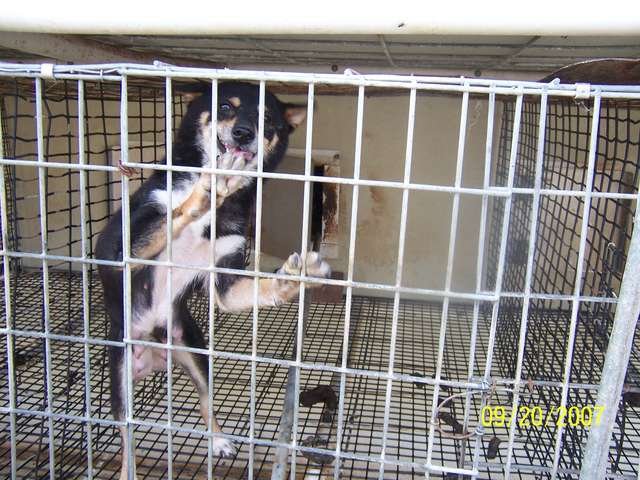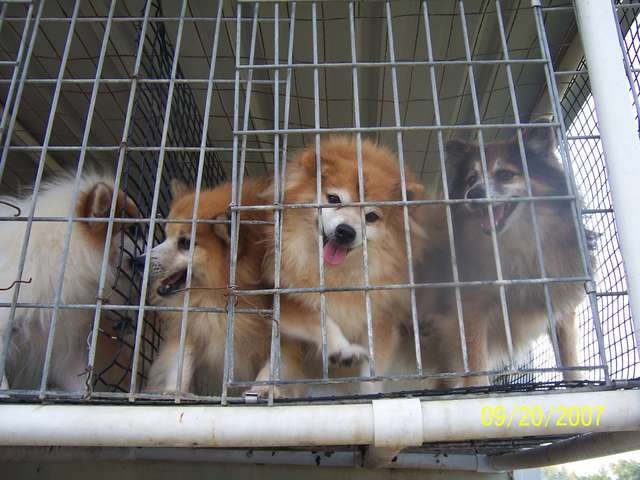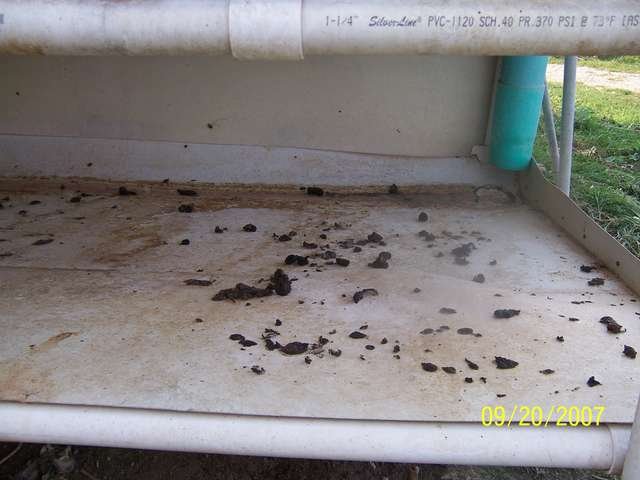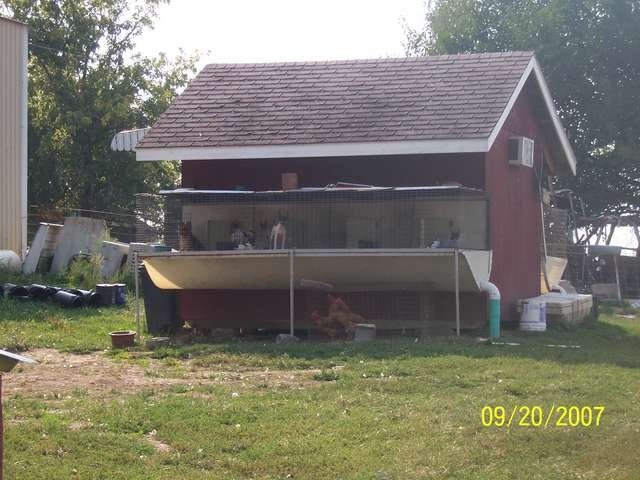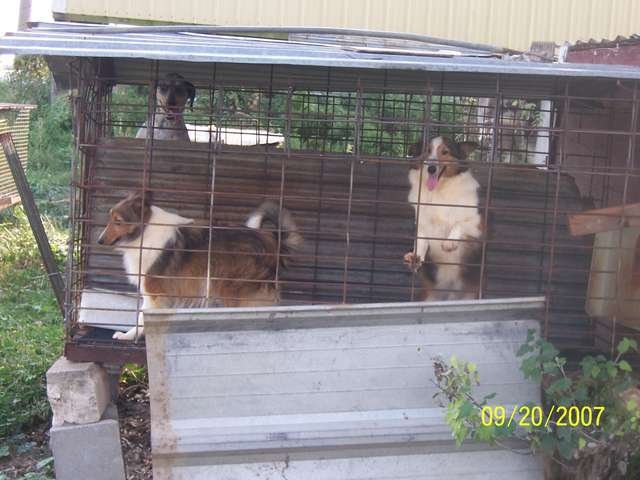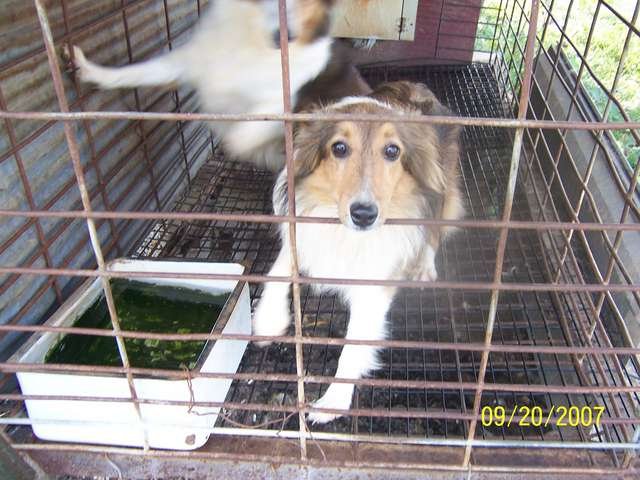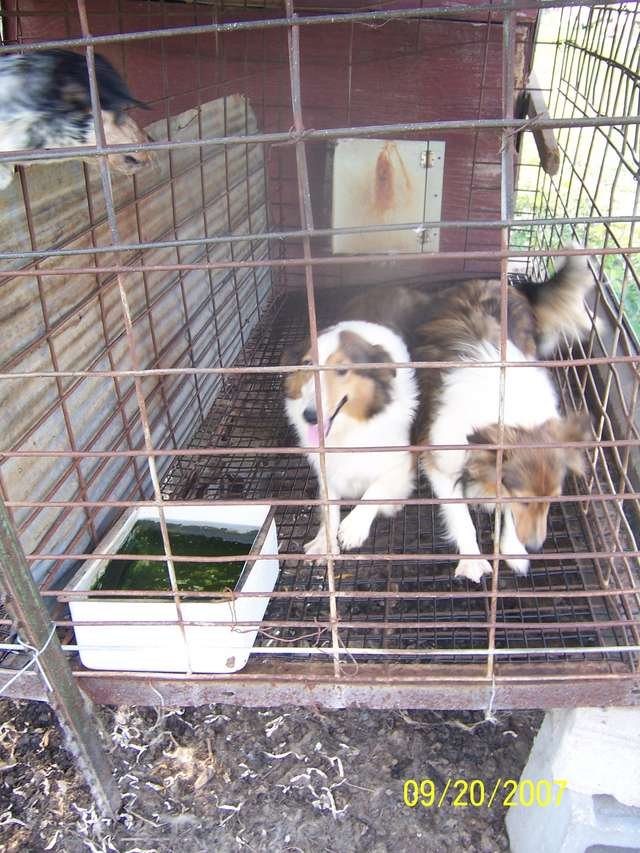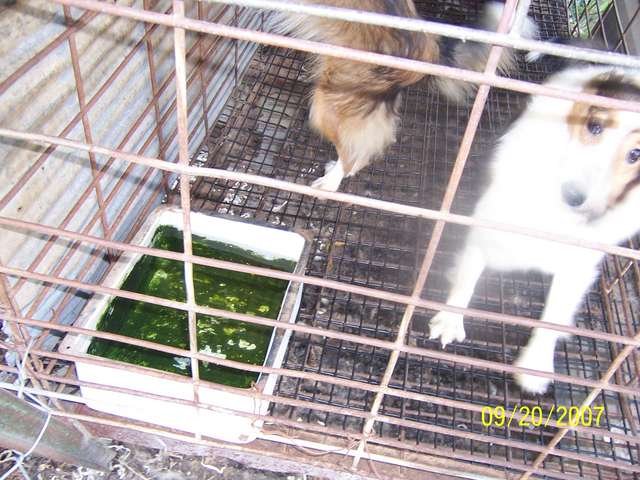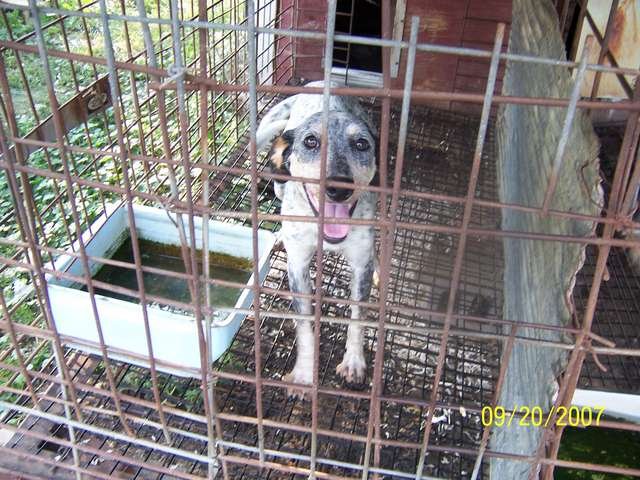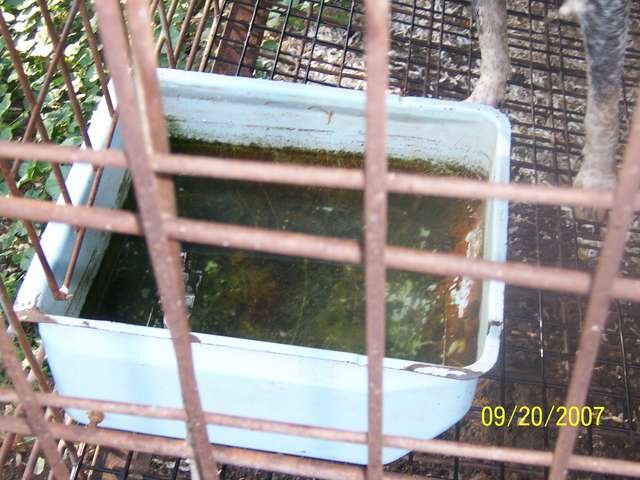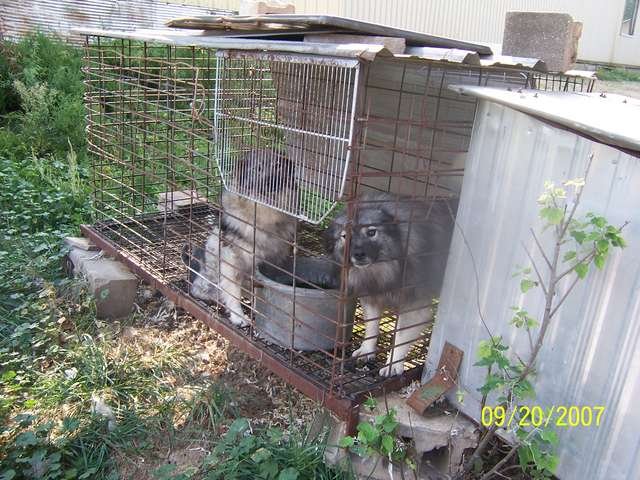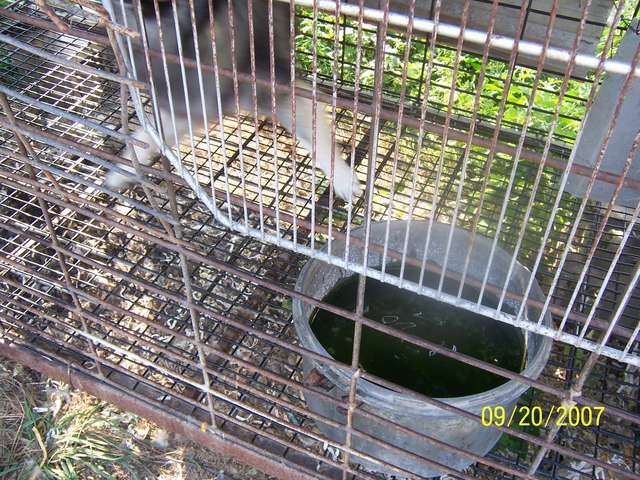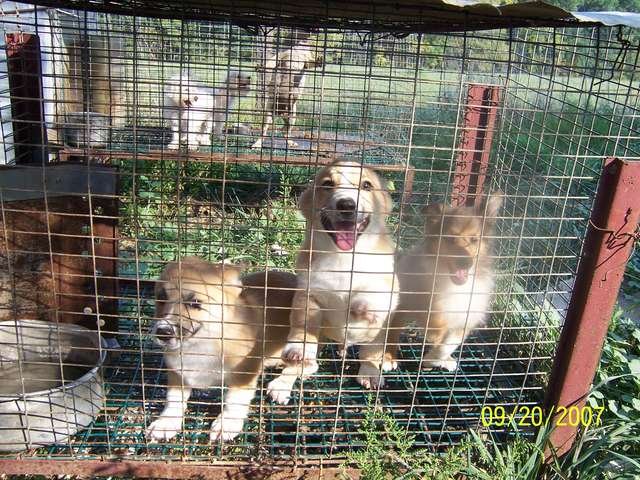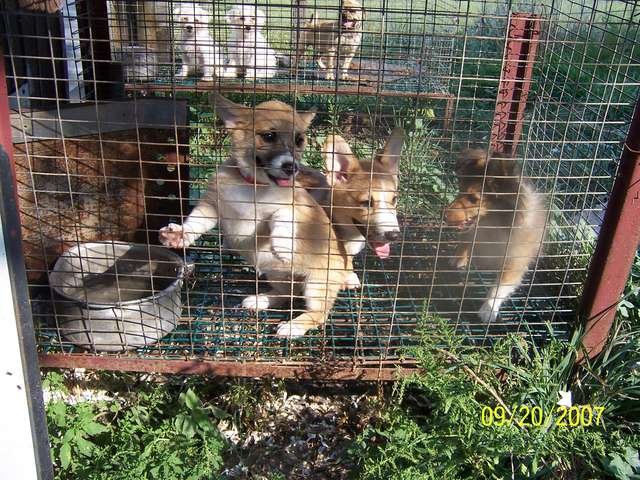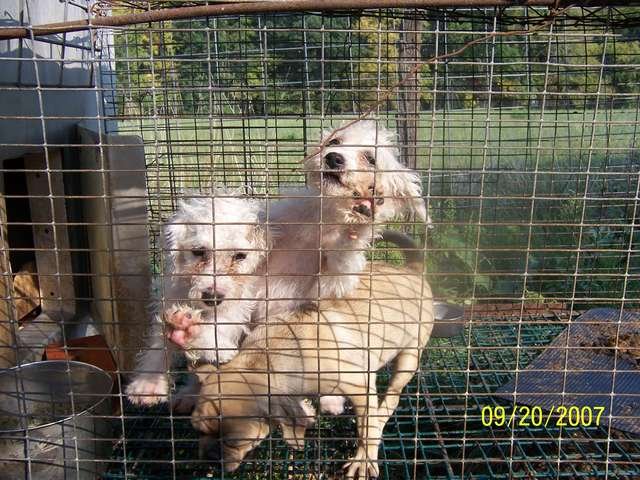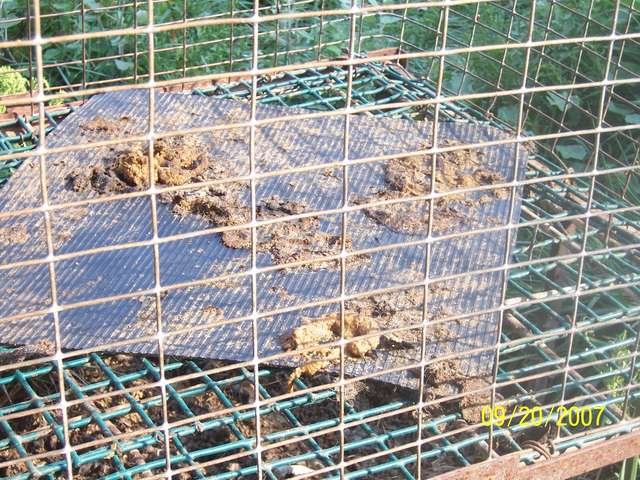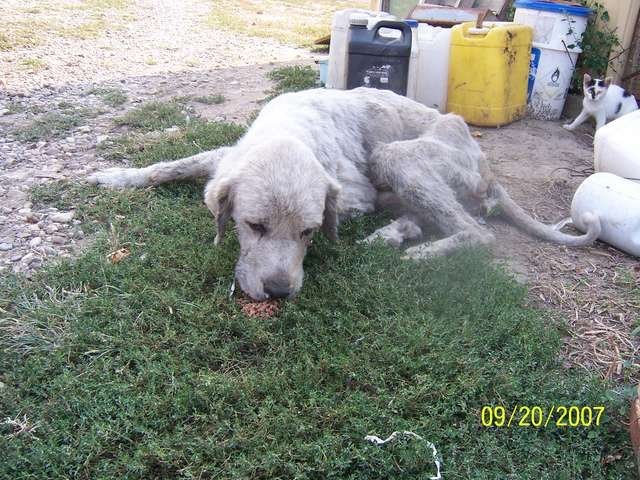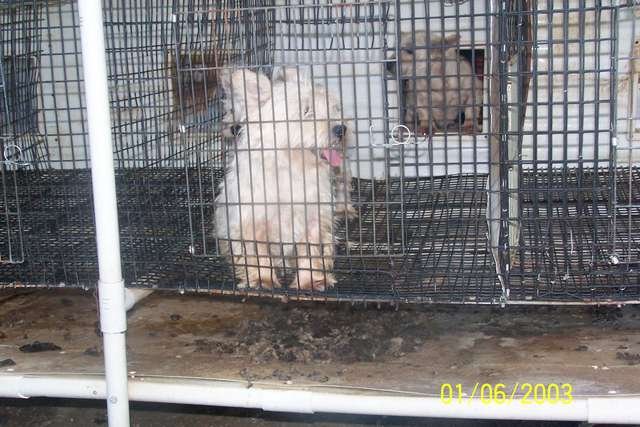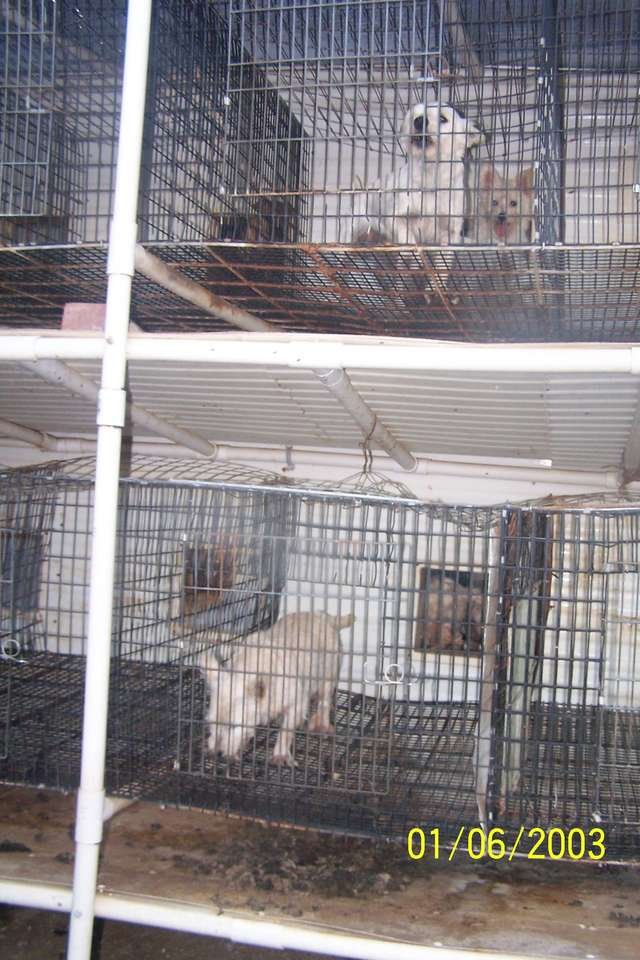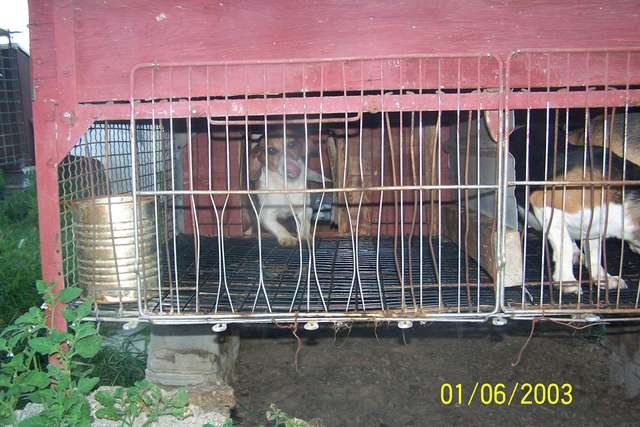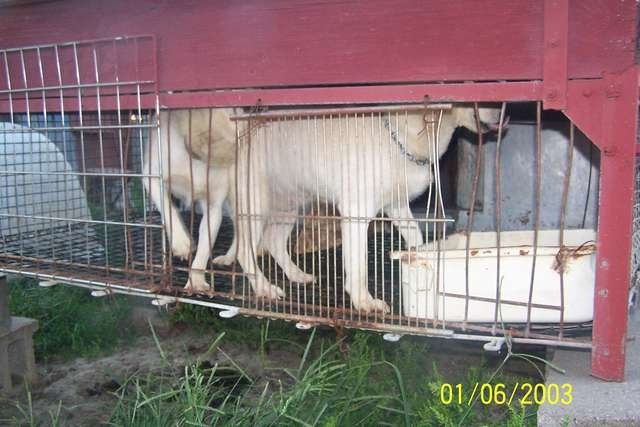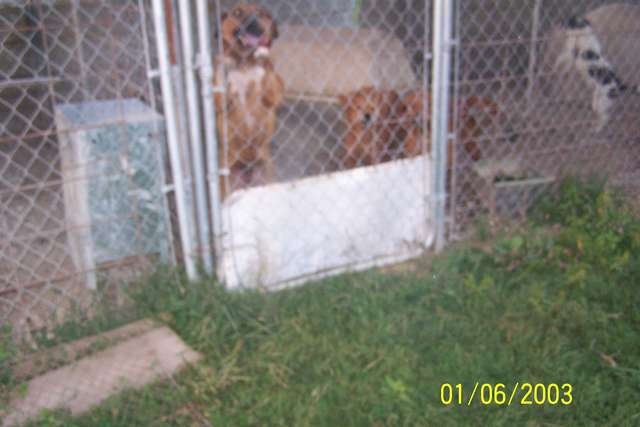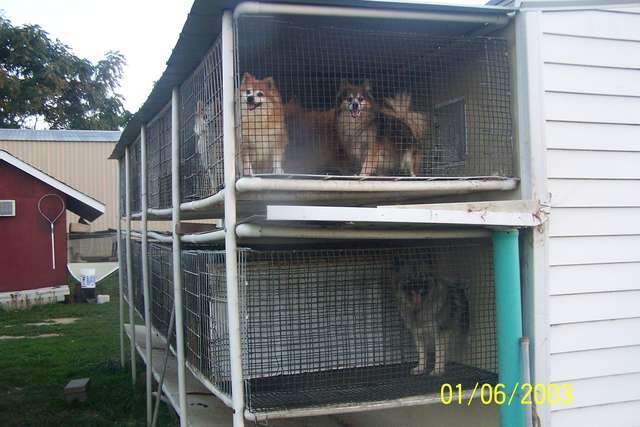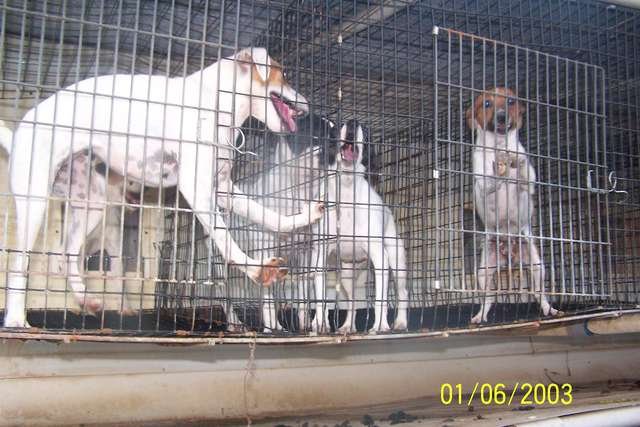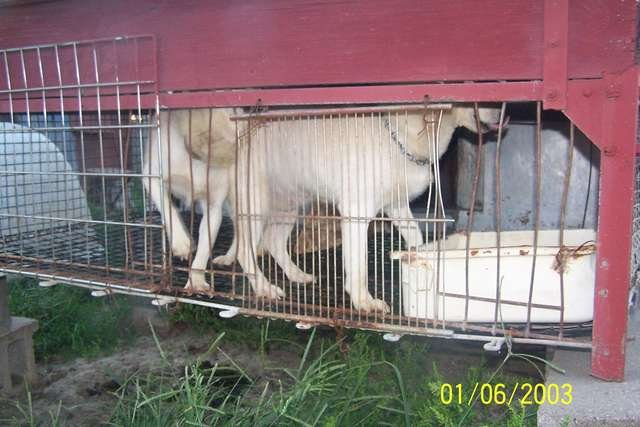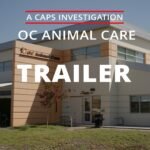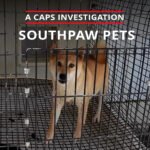Breeder: Taylor, Robert L.
Address: 700 Clark (kennel not at this address)
City, State Zip: Canton, MO, 63435
Year: 2007
USDA License: 43-A-1866
Date of CAPS Investigation: 2007-07-07, 2007-08-07, 2007-09-20
On the premises at the time of investigation: approximately 250 – 300 dogs and puppies
Breeds: Cocker Spaniel, Boxer, Shetland Sheepdog, Dachshund, Miniature Pinscher, Pug, Rat Terrier, Bichon Frise, Pembroke Welsh Corgi, Pekingese, Pomeranian, Yorkshire Terrier, Shiba Inu, American Eskimo, Poodle, Jack Russell Terrier, Chihuahua, Italian Greyhound, Siberian Husky, Shar Pei, Chow, Labrador Retriever, Puggle, Keeshond, Beagle, and several mixes.
The facilities housing the dogs on Robert Taylor’s property included several medium-sized sheds, outdoor homemade pens, and fenced-in kennel runs. All indoor facilities had a strong smell of ammonia (3.2(b)-Ventilation).
Building Type #1:
The first building types seen on the property were two white sheds known as Hunte Corporation’s “sundowners.” The buildings measured approximately 15 feet long and 10 feet wide. Each of the sheds were constructed in a double-decker kennel style, with two rows of cages on each side of the building, one elevated above the other. Beneath the elevated row of cages on each side was a white plastic platform which collected feces and urine and prevented it from falling onto the dogs in the cages on the lower level. There were approximately 40 cages in each shed with two to three dogs per cage.
Each cage in the “sundowner” contained an outdoor portion and an indoor portion which the dogs could access via a small metal dog door. The inside portion of the cages were made of white plastic and had red feeder boxes attached to each cage. These cages did not contain water spigots, only ceramic water bowls, most of which were empty (3.10-Watering).
Clumps of dog hair and feces that had dropped through the wire cage floors were accumulated on a plastic platform positioned under the cages (3.11(a)-Cleaning of primary enclosures).
A small metal dog door connected each indoor cage to an outdoor pen. A white plastic platform positioned under the outside cages had collected dog urine and piles of feces that fell through the wire cage floorings (3.11(a)-Cleaning of primary enclosures).
There were numerous flies throughout the kennel and surrounding the dogs (3.11(d)(4)-Pest control).
Building Type #2:
There were also two sheds painted red, approximately 15 feet long and 10 feet wide. Each shed had one row of approximately six cages elevated two to three feet above the ground which ran along the length of each side. These kennels housed fewer dogs than the “sundowner” sheds described above because of their one-tier structure rather than a double-decker style. The outdoor sections of these cages, supported on wooden posts, were accessed from the inside pen by a metal doggie door in the same way as the cages in the “sundowners.”
The inside portion of each cage was constructed of white-painted wood with wood flooring. The tops of these kennels were covered with a wooden plank that blocked air flow into or out of the cages. Each cage housed two or three adolescent dogs.
Red plastic feeder boxes were attached to some of the pens, while others contained ceramic food bowls. Many of the water bowls were empty.
Female dogs with puppies were housed separately, and none of those pens contained whelping boxes or carpeting; as a result, the small feet of the puppies kept slipping through the wire floorings (3.6(a)(2)(x)-Primary enclosures).
Because the flooring was made of wood instead of wire, feces and urine collected upon the flooring of the indoor portion of each cage. Dozens of flies swarmed around the puppies (3.11(a)-Cleaning of primary enclosures).
The temperature was approximately 95 °F the day of the investigation and the buildings did not provide any ventilation for the dogs housed inside (3.2(a)-Heating, cooling and temperature).
Building Type #3:
Taylor also housed dogs in homemade pens approximately four feet long and four feet wide, supported one foot above the ground by only one or two cement blocks at each corner of the pen (3.6(a)(1)-Primary Enclosures).
Each of these pens contained a wooden box approximately two feet high with a small door cut into each side. The remainder of each pen had wire flooring and was covered with wood or metal to contain the dogs. Each pen housed one or two medium-sized dogs, including Cocker Spaniels, Shiba Inus, and Pembroke Welsh Corgis.
Feeders were placed in the corner of each pen (3.9(b)-Feeding).
The property included at least three of this type of pen; similar pens were located in various corners of the property, partially hidden by trees.
Building Type #4:
A row of outdoor pens, made of metal fencing and each approximately six feet long and six feet wide, lined the edge of the property. These pens housed large breeds such as a Siberian Huskies, Golden Labradors, Shar Peis, Chow mixes, and others. The flooring was dirt, and metal sheets had been laid around the edges of the fence to prevent dogs from digging their way out, as Taylor mentioned had happened in the past.
Most of these pens contained a plastic “igloo” dog house that was too small to hold more than one dog at a time (3.4(b)-Shelter from the elements).
One pen housed a Siberian Husky with an inflamed eye that was later determined by a veterinarian, following the dog’s rescue, to be glaucoma (2.40-Vet care).
Each pen had a large water bucket made of plastic or metal. None of the buckets contained clean, clear water (3.10-Watering). The water bucket in the Siberian Husky’s pen had not been changed in so long that the water was thick and full of green algae The dog stepped in the water bucket and pulled back a white foot caked in green substances from the bucket. A second visit to the kennel revealed no water in the bucket; Taylor claimed the Husky had recently spilled it, although the bucket was dry and there was no indication in the dirt around it that any moisture had been present.
Another smaller pen housed a Boxer and a Shar Pei. The Boxer had large red sores behind each of his ears that, when asked, Taylor said were from the presence of flies swarming around the dog (2.40 Vet care), 3.11(d)(4)-Pest control).
September 20, 2007
Investigators visited Robert Taylor’s kennel again on September 20, 2007. The situation had not improved from the initial visit and, in many cases, conditions of dogs and their housing units had deteriorated significantly. All water dishes noted in the initial investigation remained full of debris and algae (3.10-Watering).
Fecal matter continued to accumulate significantly beneath the homemade pens and two-tiered kennel structures (3.11(a)-Cleaning of primary enclosures).
In one of the homemade pens supported by cement blocks, a pregnant female dog of an unknown breed was able to stick her head out of the cage via a hole in the pen. This opening was defined by sharp, rusting wires that jutted into the dog’s neck when she reached her head out of the cage (3.1)(c)(i)(ii)-Surfaces) (3.6)(x)-Primary Enclosures).
Another homemade pen on a far corner of the property housed three puppies (two Pembroke Welsh Corgis and one Shetland Sheepdog). The Shetland Sheepdog puppy had only three legs; the fourth leg was missing from the upper joint down. These dogs stood on wire flooring full of fecal accumulation and covered in swarming flies (3.11(a)-Cleaning of primary enclosures) (3.11(d)(4)-Pest control).
There was an empty wet-food dog can in the pen that had been licked completely clean; there was no indication of any other dog food. This small can of food would not have been adequate for three 8-week-old puppies. The water bowl in the pen was nearly empty and contained floating debris (3.9(b)-Feeding) (3.10-Watering).
Another pen in this corner of the property housed two adult Keeshonds. One of the dogs had been shaved from the shoulders down to the top of its tail. On the dog’s lower back were several rounded open wounds, most approximately 2 ½ inches across and some a little larger. Investigators could see raw pink skin in each wound, as there were no bandages placed over them to allow for proper healing. The dog’s tail was curled and rubbed constantly against the open wounds on her lower back. Flies were present in the pen and around the dog (2.40-Vet care), 3.11(d)(4)-Pest control).
On a separate portion of the property, investigators saw a cage housing a female wire-haired Fox Terrier and her puppies inside one of the two-tiered kennel structures. Most of her five or six puppies, approximately three weeks old, were lying on the floor in the inside portion of the cage, which was connected to the outside via a small metal dog door. One puppy, however, was trapped on the outside and could not climb back into the building through the door because it was too small and too young. This puppy lay in the corner of the cage against the metal door gasping for breath and panting, most likely due to the temperature, which was in the upper 80’s. The puppy could not walk around on the wire kennel floor because the mesh openings were too large and his feet slipped through (3.6)(x)(xi)-Primary Enclosures). Investigators removed the dog from the outside portion and placed it back inside the kennel, out of the sun, so it could nurse with the other puppies and lie in the shade with its littermates.
As investigators were leaving the property, they noticed a large dog of an unknown breed that was severely emaciated. The dog was not enclosed in a pen and had never been seen at the property before. His bones protruded significantly from his back and hips. It was evident that he was either drastically underfed or in need of veterinary attention to disclose a medical problem causing him to be so emaciated. His eyes were full of a yellow discharge. (2.40 -Vet care) (3.9)(b)-Feeding). Investigators fed him wet dog food as well as dry kibble, which he ate immediately, barely lifting his head to eat.

